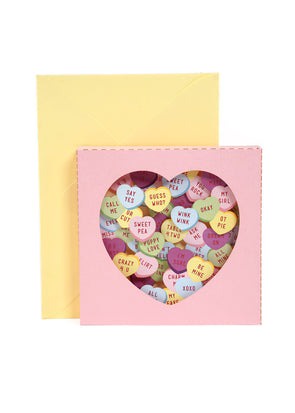Valentine's Day, celebrated annually on February 14th, is a day dedicated to love, affection, and the expression of heartfelt emotions. While the day itself holds a rich history and cultural significance, one timeless tradition that has endured through the ages is the exchange of Valentine's Day cards. These small tokens of affection carry sentiments that transcend time, providing a tangible and enduring expression of love. In this exploration, we delve into the history, evolution, and enduring charm of Valentine's Day cards.
The Origin and Evolution:
The tradition of exchanging valentine cards dates back centuries, with its roots intertwined with the legend of St. Valentine, a Roman priest who defied the emperor's decree and continued to perform marriages for soldiers in secret. Arrested and imprisoned, St. Valentine is said to have sent the first valentine greeting to his jailer's daughter, signing it "From your Valentine." This act is considered the origin of the tradition of expressing affection through written messages on Valentine's Day.
The first recorded valentine card, however, didn't surface until the 15th century. Charles, Duke of Orleans, wrote a love letter to his wife while imprisoned in the Tower of London in 1415. This early example laid the groundwork for the tradition of exchanging love notes.
As printing technology advanced in the 18th century, the production of Valentine's Day cards became more widespread. In the 1840s, Esther A. Howland, known as the "Mother of the American Valentine," began mass-producing intricate and beautifully designed cards. These early cards were adorned with lace, ribbons, and colorful illustrations, often featuring Cupid, doves, and hearts — symbols that continue to dominate Valentine's Day imagery.
Themes and Imagery:
Valentine's Day cards showcase a rich tapestry of themes and imagery, each conveying a unique message of love and affection. Traditional motifs like hearts, roses, Cupid, and doves are popular choices, symbolizing love, passion, and devotion. The color red, associated with love and desire, dominates the palette of many cards.
Modern cards, however, have expanded beyond these traditional symbols. Personalized and humorous cards have become increasingly popular, reflecting the diverse expressions of love in contemporary relationships. From pop culture references to inside jokes shared between couples, the range of themes has broadened to accommodate the varied dynamics of modern love.
Personalization and Technology:
In the digital age, the art of sending Valentine's Day cards has undergone a transformation. While traditional paper cards continue to hold sentimental value, electronic cards or e-cards have gained popularity for their convenience and interactive features. Online platforms and mobile apps allow users to personalize virtual cards with photos, messages, and even animations, creating a modern twist on a classic tradition.
The shift to digital cards has not replaced the traditional charm of physical cards but has offered new avenues for expression. Whether sent through mail or electronically, the sentiment remains the same — a gesture of love and connection.
Handmade Cards: A Labor of Love
For many, the true essence of Valentine's Day cards lies in the effort and creativity invested in their creation. Handmade cards, crafted with love and attention to detail, add a personal touch that mass-produced cards often lack. From intricate paper cuttings to elaborate calligraphy, the process of creating a handmade card becomes a labor of love itself.
The act of crafting a card allows individuals to pour their emotions into a tangible form, making the gesture even more meaningful. In a world filled with digital communication, the authenticity and personalization of a handmade card stand out, capturing the essence of the sender's emotions.
Expressing a Spectrum of Emotions:
Valentine's Day cards are not confined to romantic expressions alone; they span a spectrum of emotions. From platonic love to familial affection, these cards provide a versatile means of expressing care and appreciation for those close to our hearts. Friendship cards, in particular, have gained popularity, allowing individuals to celebrate the bond of friendship on a day dedicated to love in all its forms.
Inclusivity and Diversity:
As societal norms evolve, so do the themes and messages conveyed through Valentine's Day cards. The tradition has become more inclusive, recognizing and celebrating diverse expressions of love. Cards are now available in a variety of designs that cater to different relationships, orientations, and cultural backgrounds, ensuring that everyone can find a card that resonates with their unique connection.
Conclusion:
Valentine's Day cards, with their rich history and ever-evolving expressions of love, continue to be a cherished tradition. From the elaborate handmade creations to the convenience of digital cards, each carries the weight of sentiment and emotion. In a world that often moves at a rapid pace, these tangible tokens provide a moment of pause, allowing individuals to express their feelings in a meaningful and enduring way. As we continue to navigate the complexities of modern relationships, the timeless charm of Valentine's Day cards remains a steadfast reminder of the enduring power of love and connection. Visit the official website makeascenecards.com


No comments yet